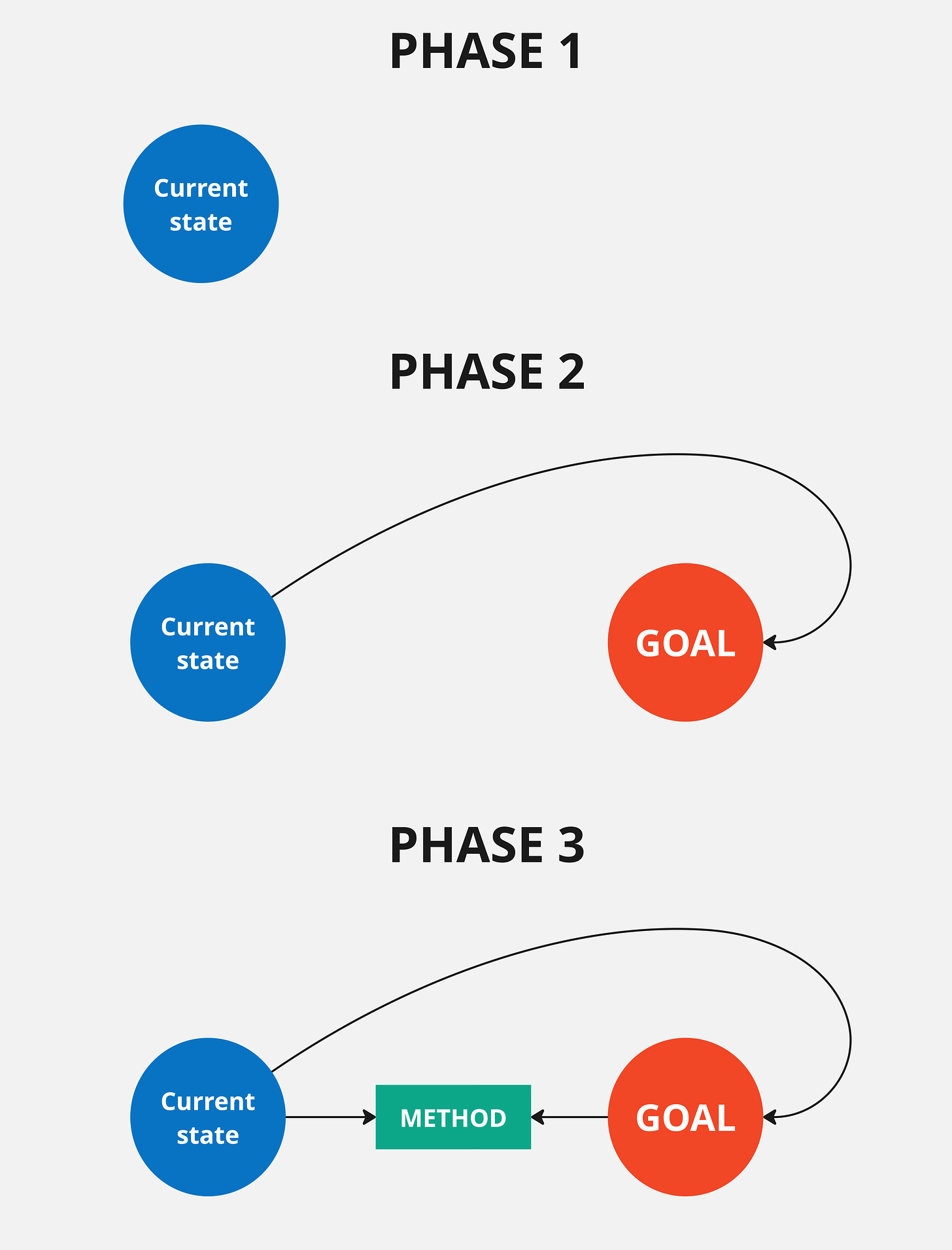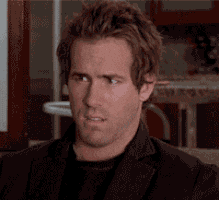Today is a special day—I’m publishing my 200th article on Substack. To celebrate, all subscribers are getting gifts. Find out more at the end of the article.
"If you define the problem correctly, you almost have the solution."
Steve Jobs
There’s an old joke. A man was walking through the desert and found an old brass lamp. He rubbed the lamp, and a genie popped out of it.
“Listen,” said the genie, “I am too old, so I can grant any wish, but only one. So, think carefully.”
The man thought for an hour or so and then said: "I wish I had everything!"
“No problem, man,” the genie replied. A soft chime sounded, and the genie said: “Now you already had everything!”
We can paraphrase Steve Job’s statement from the epigraph as “If you define the task incorrectly, you’ll never find the solution. Or, you can find it, but it will be a solution to another task.”
That’s what happens when companies start crafting a strategy. They begin with the wrong goals and pick the wrong tools, and then they are left puzzling about what went wrong.
If the engine’s dead, no point in pumping the tires. Fix the engine.
Illusory simplicity leads to excessive complexity
Most experts present strategy as seductively simple, like three phases:
1. Figure out where you are now (your current state, or point A)
2. Decide where you want to be (your strategic goal, or point B)
3. Plan how to get there (your action plan)
Henry Louis Mencken said: “For every problem there is a solution which is simple, clear, and wrong.” This simplistic approach to business strategy is a perfect example.
This approach emerged and has become prevalent because it looks clear and logical.
For instance, if you’re in a cabin, and it is cold inside (your current state), you can set a goal (to warm up the cabin) and choose a method – to chop wood and build a fire in the stove.
However, thinking you can use the same approach to various tasks is like believing you can operate on a sick eye with an axe.
You can successfully apply this approach to simple tasks when:
1. 90% of achieving the goal depends on you. If you have an axe and your hands are strong enough, you will chop wood. In business, though, your success depends on many people whom you can’t control: your competitors, customers, employees, regulators, local residents, etc. The infamous belief in shaping the world according to your dreams, radiated by self-help books, only enriches their authors.
2. You can clearly specify your strategic goal. If you’re going to build a bridge across the river, you must visit the opposite bank. You need to know exactly what’s over there. You can imagine the warmth in the cabin. However, unless Doc Brown isn’t a close friend of yours, you can’t go to 2028 and see your target state in detail. Two problems will hinder you from setting clear strategic goals:
2.1. Strategy is always about the future, which is unpredictable by nature.
2.2. Strategy is about creating what has never existed before. How can you describe what you haven’t seen?
3. You can analyze your current state thoroughly. What exactly should you know about it? What data is critical for future decision-making? Business books don’t answer these questions.
4. You have a familiar, reliable method for getting from point A to point B. But since you are creating something new, how can you do it with a proven method? Strategy doesn't just mean creating new things; it means creating new things with new tools.
An athlete who is about to run a race has everything they need. They know where they are now (starting point) and where they are going (finishing point). They know what to do to get there because they have already done it.
If you're a business leader crafting a strategy, your future and the path to it are about as clear as an immigrant's plan who just arrived broke and can’t speak a word of the local language.
If your goal looks like a finish line, your reality will seem like a dead-end
Let’s imagine for a second that all the problems above have disappeared. You have a crystal ball, you see point B, and you have everything you need to get there.
Fast forward to 2028. You've achieved your goal precisely as it was set in 2024. Is this a reason to drink champagne? I don't think so.
Your business doesn’t stop in 2028. Your 2029 will be successful only if you launched many development projects in 2026, 2027, and 2028. Moreover, your 2030 will also be successful if you think about 2032 in 2029.
Many experts present strategy as a series of leaps from one goal to the next. But most of them are strategy academics. As a seasoned CEO, I state that it is a bankrupt concept.
Business is an infinite game. Any strategic goal is not a finishing line but just a milestone, one of many.
Business is not a discrete game but a continuous one. At any given moment, you should engage in layered strategic thinking: considering three time layers—the present (today's problems), the near future, and the distant future.
If you don’t consider three time layers every single day, you’ll be out of business by the moment you reach your strategic goal.
Jeff Bezos said in 2017: “When somebody … congratulates Amazon on a good quarter … I say thank you. But what I’m thinking to myself is … those quarterly results were actually pretty much fully baked about 3 years ago. Today I’m working on a quarter that is going to happen in 2020.”
If your goal looks like a finish line, your reality will seem like a dead-end.
Layered strategic thinking
Setting multiple strategic goals for various time horizons isn’t a solution. Such a monstrous system is too hard to manage, given that the goals will often change.
However, the task becomes easier if we see strategic goals as directions, not as points in the future.
For instance, if your strategy involves winning new customers by offering low prices, your goal may be to 'Grow by at least 15% annually by offering customers products of acceptable quality at the lowest market price.' This goal will guide actions for production, procurement, sales, marketing, and IT.
Another example is 'Grow by 20% annually in countries with a developed business culture by creating and promoting top-tier IT solutions for businesses in the field of supply chain management.'
Doesn’t sound like business textbook examples, does it? But what would you prefer – following the book or being successful?
You can follow such a direction for years without needing to adjust it. And your shorter-term plans will help you develop successfully as long as they align with it.
You can read more about the topic in chapters 5, 6, and 8 of my book.
It may sound counter-intuitive, but strategic development isn’t a means to an end. It is a goal in itself.
Since business is a never-ending game, there are no winners, no scores, and no finish lines. The goal of the game is to stay in the game by becoming stronger day in and day out.
In the book, I argue, "The purpose of a business is to build a 'great team,' a company that will outlive its founders. It can lose a game or a tournament but will win long-term.”
Winning a competition or tournament is for the weak. Success in business is staying at the top when the ones you started with have long fallen off.
Don’t forget about the gifts—read until the end!
Things I stumbled upon recently
I instinctively don’t trust strategy implementation software, but this solution caught my attention.
This will create even more problems for EV manufacturers, as no one will want to buy a car that loses almost all its value in the first five minutes of driving.
This is an old article by Paul Graham, but it is worth re-reading.
The Fast-Track Strategy: Craft Your Strategy In a Few Simple Steps program has already started, but there are still spots available! If you subscribe by October 18th, you can still catch up.
Your opinion matters to me:
And finally, the gifts!
First, download the Ultimate Strategy Checklist for free here and check your strategy.
Second, until November 10th, you can upgrade to a paid subscription with a 20% discount. Here’s the link. It won’t solve my financial problems, but it will support me in another way—Substack promotes newsletters with paid subscribers. Support my work! Thank you in advance.
Plus, the first three people to subscribe to the monthly plan will get a free book and a one-hour Zoom session with me. The first person to subscribe to the annual plan will get a free book and three one-hour Zoom sessions with me.
But that’s not all! I can become a strategic advisor for one company pro bono for six months. To learn more, send me a direct message here, and I’ll share the details.
Read also: Annual Budgeting Is a Pricey Illusion – Time to Dump It for Good








Many excellent points in this post, from the "long-termism" of strategy to strategy as a medium to identify and define the right problem to solve.
I'm quickly becoming a fan of this newsletter!
Great article ! Really appreciate the focus on long-term thinking. Success is about staying in the game, not just hitting short-term goals.